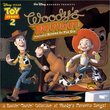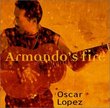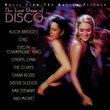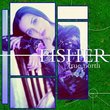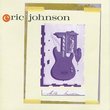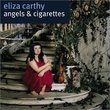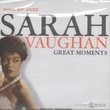| All Artists: David Nigel Lloyd Title: How Like Ghosts Are We Members Wishing: 0 Total Copies: 0 Label: Silk Purse Records Original Release Date: 3/15/1998 Release Date: 3/15/1998 Genre: Folk Style: Number of Discs: 1 SwapaCD Credits: 1 UPC: 765481779325 |
Search - David Nigel Lloyd :: How Like Ghosts Are We
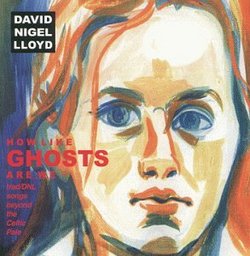 | David Nigel Lloyd How Like Ghosts Are We Genre: Folk
"How Like Ghosts Are We: trad/DNL songs beyond the Celtic Pale." In a way the title explains all. There is something haunted and feral to this album of Celtic Americana. David Nigel Lloyd recorded it in his small studio in... more » |
Larger Image |
CD Details
Synopsis
Album Description
"How Like Ghosts Are We: trad/DNL songs beyond the Celtic Pale." In a way the title explains all. There is something haunted and feral to this album of Celtic Americana. David Nigel Lloyd recorded it in his small studio in the Southern Sierra Nevada where -over the last ten years-he has grown a little haunted and feral himself. Because of this seclusion, DNL has little in common with the current Celtic Boom. On this album, he bears more of a resemblance to the British folk performers of the 1960s and the Gaelic poets that came in the century before them. However, the art of Celtic song has rarely if ever been handled like DNL handles it here. Though the mixing of traditional and original material has itself a long and honorable tradition, DNL sees traditional material with the eyes of a poet. He does not ask the traditional to accommodate the literary or vice versa. The two can sort things out for themselves. The result is much more edgy than most contemporary Celtic music. The title, "How Like Ghosts Are We," is taken from the last verse of "On the Trail of Tears," the album's opening song. Sung to the familiar tune of "The Foggy Foggy Dew," it goes: I wish you could see how like ghosts are we, Like some wretched souvenirs of our horrid plight, of our desperate might Of our making Is the Trail of Tears. But the title is not to be taken only in this existential sense. It also refers to DNL's technique of inviting a tune's old meaning and associations to 'haunt' the new ones his words provide. Thus the traditional ghost haunts the literary tenant. More than half the album consists of these, as he calls them, trad/DNL songs. The balance being three traditional songs sung straight and one original song sung traditionally -more or less. DNL is not the only literary tenant of this haunted house: "A Ballad of Roger Casement"** sets excerpts of two poems by William Butler Yeats to music. The lyrics of "The Laird o' Cockpen" are replaced with familiar quotations from T. S. Eliot. "The Greenhorn Woodcutters" is based on "The Loch Tay Boat Song," itself a literary ballad by Sir H. E. Boulton. "Moreton Bay" was originally a poem by a Nineteenth Century Australian convict known as Frank the Poet. The form, the melodies and sensibilities of the songs on "Ghosts" derive recognizably from British and Irish traditional material. However, the instrumentation, particularly the use of pedal steel guitar on "The Greenhorn Woodcutters" and "Bold Johnny Barleycorn," is deliberately intended to give some of these ghosts American accents. Although each of the album's eleven songs stands alone, they can also be treated as a whole: "Ghosts" begins with a personal song of immigration followed by five songs of prisoners and death; two songs of love (or something like it); a song of booze; a song of mirage; and ends with a song of immigration reconstructed. It is in many ways a very personal album even though it is populated with historical and mythical figures: Queen Victoria and Prince Albert, Captain Logan, the James and Younger Brothers, Roger Casement, God, Johnny Barleycorn, the Green Man and the Nut Brown Girl. "How Like Ghosts Are We" is David Nigel Lloyd's fourth album. In its production he has followed his usual habit of recording the vocal and guitar or octar live so as to obtain a compelling performance; music that's good on paper is not necessarily music. Other instruments get added to the recording later. Among accompanying musicians are old friends from DNL's Mojave Desert Ceilidh Band. DNL's daughter Ursula, who was 12 at the time of the recording, played pennywhistle and assisted with the audio engineering. It is her portrait that haunts the cover of the CD. Gita, Ursula's mother and DNL's wife painted it. Copyright 1991 by David Nigel Lloyd **The words from "Roger Casement" (extract 7 lines) and "The Ghost of Roger Casement" (extract: 4 lines) taken from "The Collected Poems of W. B. Yeats are set to music by permission of A. P. Watt Ltd. on behalf of Anne and Michael Yeats.
Similarly Requested CDs
| Oscar Lopez Armando's Fire Genres: International Music, New Age, Pop Label: Narada | |
| Luka Bloom Riverside Genres: Alternative Rock, Folk, International Music, Pop, Rock Label: Warner Bros UK | |
| Fisher True North Genres: Folk, Pop, Rock Label: Interscope Records | |
| Bobby Vee Down the Line: A Tribute to Buddy Holly Genres: Pop, Rock Label: Finer Arts | |
| Eric Johnson Ah Via Musicom Genres: Jazz, Pop, Rock, Classic Rock, Metal Label: Capitol | |
| Eliza Carthy Angels & Cigarettes Genres: Folk, International Music, Pop, Rock Label: Warner Bros UK | |
| Sarah Vaughan Great Moments Genres: Jazz, Pop, Broadway & Vocalists Label: Classic World | |
| Maggies Farm Glory Road Genres: Pop, Rock Label: Dead Line | |

 Track Listings (11) - Disc #1
Track Listings (11) - Disc #1